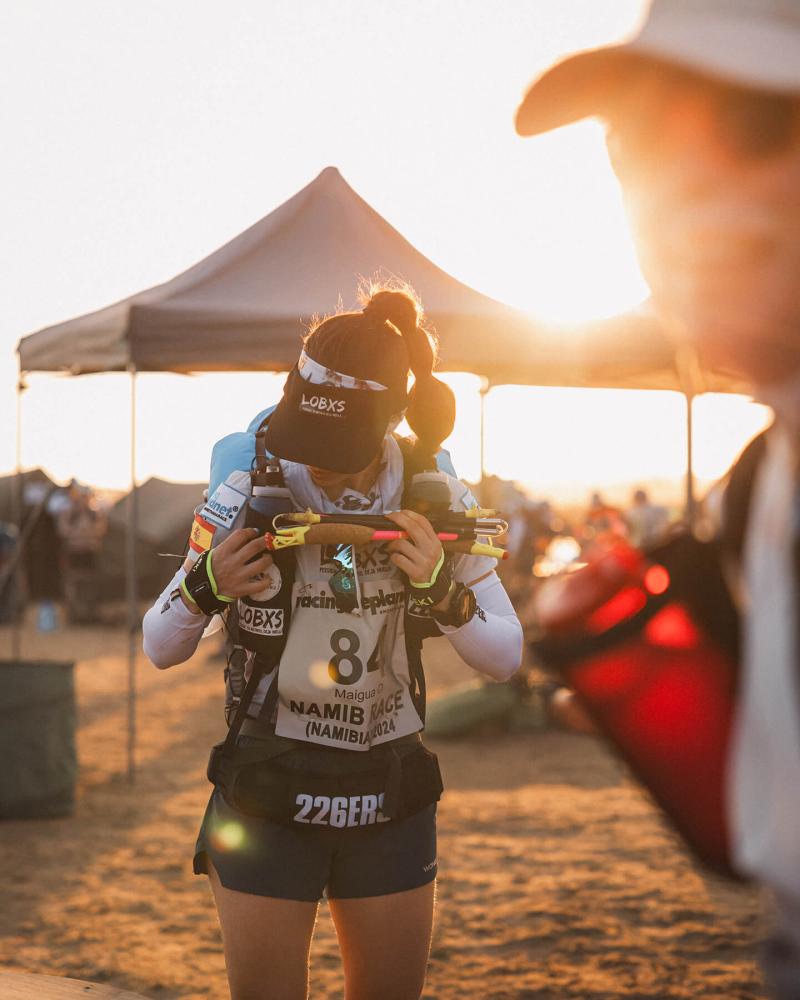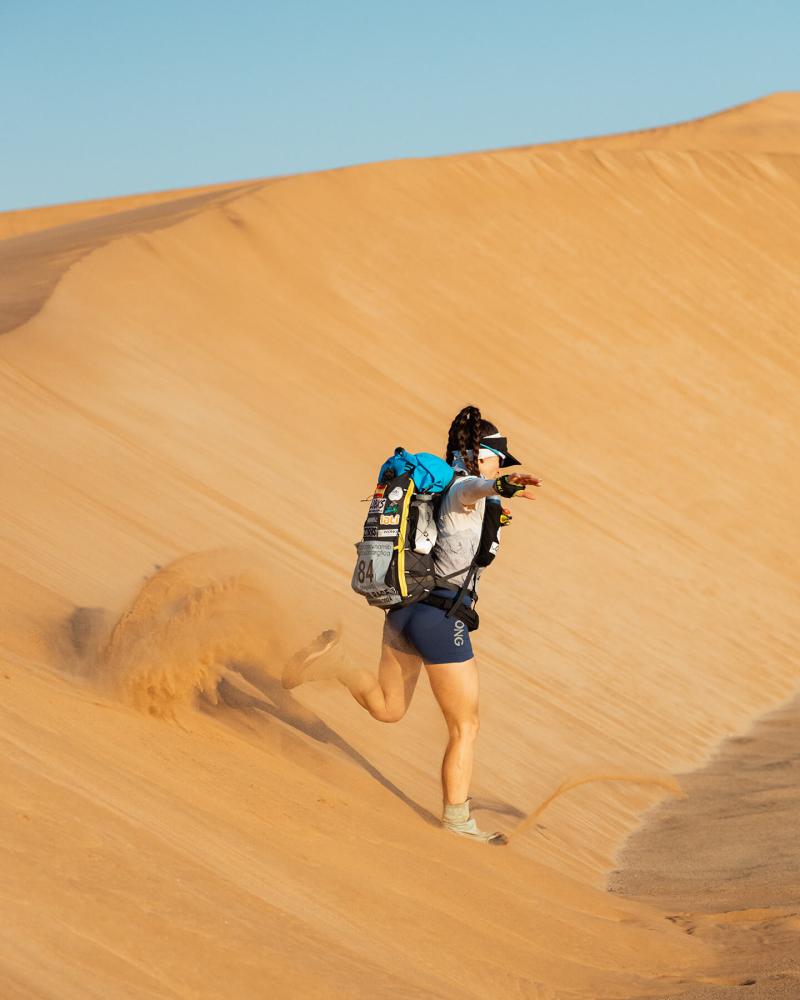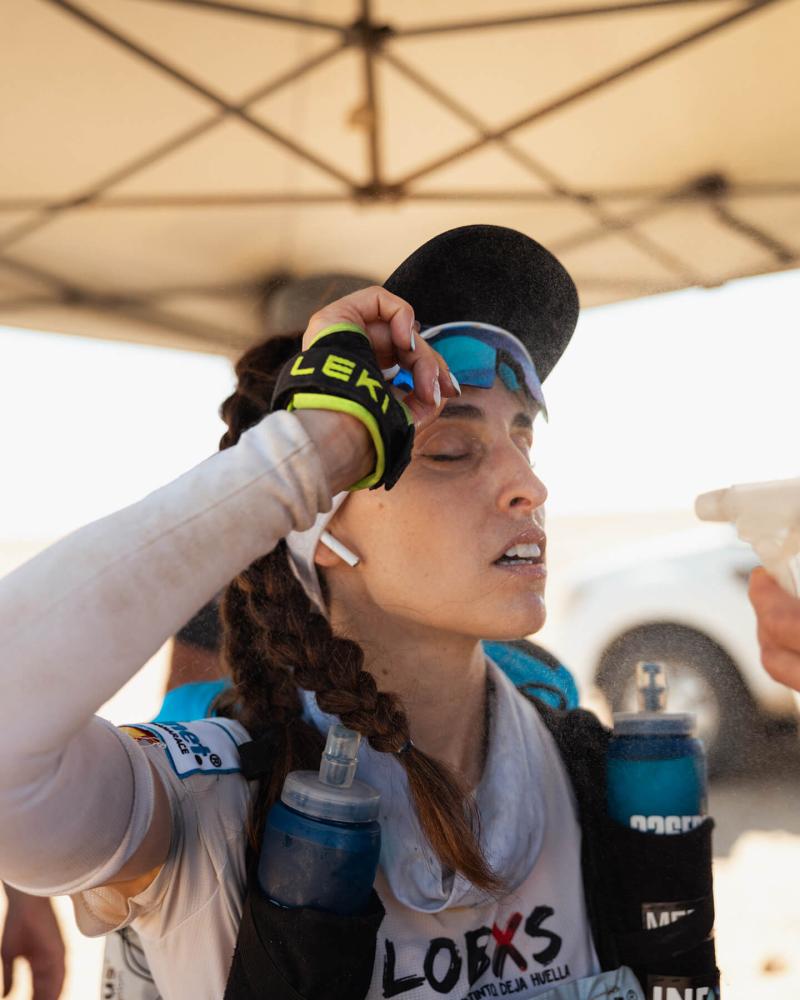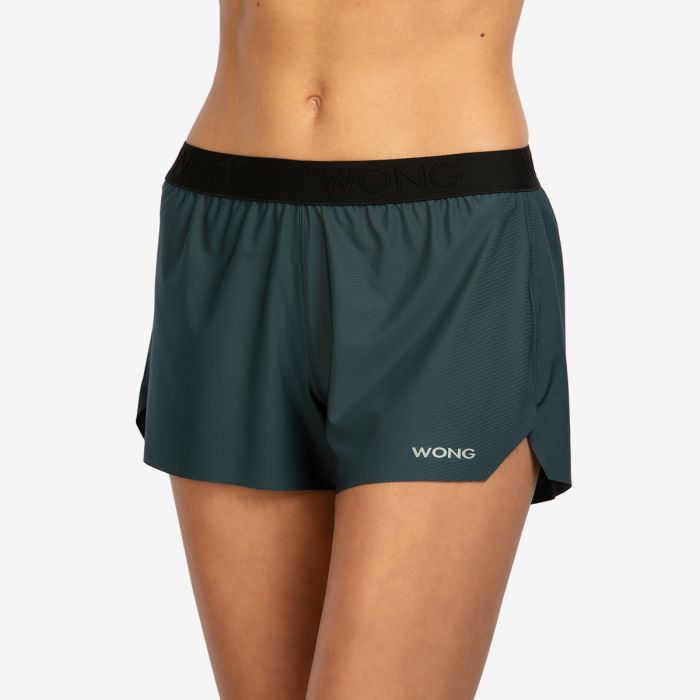#11 | Maigua Ojeda: Grand Slam Plus 4 Deserts Namibia, where it all began

I don't know if you've ever felt that a decision changes your life, even before you make it. When I set out to face the Grand Slam Plus 4 Deserts, I knew I was getting into a journey that would take me beyond my physical limits, yes. But also beyond what I emotionally imagined. Four races, four deserts, 1,250 km of self-sufficiency. The Grand Slam is one of those things that can't be explained. They are lived. And only by living them in your own skin can you begin to understand a tenth of the entire adventure, because honestly, not even while you're in it, you understand many of the things that happen. These world series (which have been organized for twenty-one years) started in Africa, specifically in Namibia. 250 km through one of the oldest deserts on the planet. Hostile terrain, extreme temperature, a lot of loneliness and a beauty... that cannot be described.
Here is my summary of that first race. I write it from the truth, from a tired body, from a wounded back but a full soul.
NAMIB RACE: 250 KM THROUGH THE OLDEST DESERT IN THE WORLD
• Namib, Naukluft National Park
• Average of 46ºC. Maximum temperature: 54ºC
• Six stages: four of approximately 40 km, a long stage of 80+ km and the last stage.
Stage 1
Everything is new. The weight of the backpack. The silence. The dry smell of the desert. The first night in my tent. The discomfort. Waking up with the first reddish rays on the infinite horizon. A cold breakfast. We leave at dawn. I try to concentrate but in front of me is the starting arch where I can read "Namib Race", and then I feel a bittersweet mix of emotion and nerves. A lump in my throat makes me smile. A tear slips down my cheek as I tell my partner, pointing to the arch: "It's my dream". I put my hand on the JUNO top that hugs and protects my chest. It will be essential for the next 6 hours of running under the African sun. My legs respond and run freely and strong, accompanied by my favorite shorts: they are perfect. It's as if they were a second skin. The stage flies by.
The body is still fresh. But the heat hits hard. The wind cuts like sandpaper. And the sand gets everywhere. "I came in third! Wow! I feel whole and I'm ready for the next stage", I say to myself while smiling at the ceiling of my tent.




Stage 2
"Today we ran another 40.8 km from the Kuiseb River to the crests of the dunes..." (Yes, at night I started writing in my notes as always). It was a tough day. My legs didn't respond. I was swollen, slow, clumsy. My sleeping bag fell out of my poorly closed backpack. I lost it among the dunes. I went back. I lost minutes and rhythm. But it was also a beautiful day. One of those where you learn that the desert is not your enemy: it is your mirror.
After so many kilometers where the wind was blowing, bringing sand, I checked my body's wounds. My legs were perfect. On a windy day like that, the ARES mini tights had been a good choice. They held up like a champion against the friction and salty sweat. The SYNERA socks -although covered by the gaiters-were also key. I had already covered 80km of sand in those giant dunes and I was one of the few people in the camp who didn't have a single blister on their toes, it was practically a miracle.
Stage 3: Transition Stage
The body begins to feel the wear and tear. A terribly psychological track, along an infinite road, takes us for kilometers and kilometers in a straight line towards a valley. The temperature on this third day is 48 degrees, but today there is not a single drop of air. I start to shiver from the cold and realize that I am becoming imbalanced. I look at the sky and ask for a little breeze please ... Just when I am about to want to burst into tears, I see the next flagging banner waving... Air... Air at last ...
I reach the finish line destroyed, thinking about the next day's kilometers and how imbalanced I feel. I take my feet out of my shoes, which have sweat a lot with today's heat. I take off my socks (this time the PINA ones). Not a single blister. I am surprised and grateful because these feet still have too many kilometers left ... Around me I see just the opposite, after 3 days in the sand, there are many people in the medical tent asking for help to be able to recover their feet for the next day.




Stage 4: Running in an Oven
We leave knowing that it will be a historic day due to the brutal temperature that Sam has told us we would reach : 'Today we will exceed 50 degrees at peak time, so hydrate well'. The ground literally seemed to melt under my feet. Two hours after starting to run, the sun was beating down on my body. Every drop of water I threw on my face evaporated in a matter of seconds. It was suffocating. Like running with your head inside a lit oven.
And yet, it was also my most unexpected day: I won the stage. I don't know how to explain it. My body responded to me like never before. I felt light, determined. Without mental noise. I just wanted to move forward. I remember looking at my shadow -very tiny despite the midday sun- and thinking: 'don't stop'. The finish line was at the bottom of a dry river canyon. I reached the finish line at peak time... the camp thermometer marked 54 degrees in the shade....
Stage 5: The Longest Stage
More than 80 km. Average temperature of 46 ∘C. After four days of running, I felt that the podium was within my grasp. A very windy day came up. For practically the entire start of the stage, Pamela (my companion from Zimbabwe with whom I was disputing third place) and I, ran against the wind along with an Australian and a Kazakh who came and went. Then I made a change of pace and went with the Australian, looking at the ground. I saw that he stopped and looked around... We were lost. And I was very angry with myself for having stopped paying attention to the flagging. I was lost for more than 40 minutes at more than 45 degrees, with no shade, no visible tracks, with a wind that made it very difficult to see into the distance. I thought about pressing the emergency GPS button, but something told me: breathe. And then I found something moving in the distance. I decided to try to follow it, and the Australian did too. After losing all that valuable time, I returned to the circuit just in time to see the German woman with her foot shattered from a fall in a gorge of rocks hidden among the sand. I hugged her and then caught up with Pamela. I was back in the race. I ran with everything I had left. Furthermore, I ran out of gels, so I had nothing to eat. It got dark, and I lost Pamela... I reached the finish line just 8 minutes behind her. I collapsed. I cried. I laughed. But Pamela's hands were there to hug me.
Stage 6: The Last Stage
Barely 10km in which I ran alongside Pamela as if we were both animals who, after a lifetime in a cage, finally found freedom. We ran nimbly and reached the finish line... I managed to be:
- Third woman after the Australian and the Austrian.
- In my first great desert, I got into the overall top 10.
- With an average temperature of 48∘C | Peak Temperature 54 °C.
This led me to have in my mind and in my heart that maybe we could try to get on the podium in the Grand Slam of these deserts.




What worked on this hostile terrain:
The fit was medium. The perfect one. I could breathe and sand didn't get in. The waistband didn't cause me any wounds, despite the constant pounding of the backpack. On the other hand, the fabric took longer to dry than the shorts. However, in the desert it is positive to wear wet clothes, so they worked.
• JUNO top: light fabric that did not retain salts; a key detail to avoid chafing on the collarbone. However, the backpack hit my back so much that I got a sore spot under the top. I changed tops and it happened again. In the third desert, I changed my backpack and understood that it had been a bad fit.
• SYNERA and PINA socks: the Synera ones cushioned the first two days ; the PINA ones, thinner, were perfect when my foot started to swell from the heat and salts. The gaiters and the fabric of these socks were key to not having blisters in this first desert.
• PEGASUS shorts: The shorts that dried the fastest. The best thing was the soft waistband and the inner brief, which allowed me to urinate even while standing and without taking off my backpack. On the other hand, I couldn't use them on windy days because they allowed sand to enter better than the tights, since they weren't tight to the body.
There is no magic. In the desert, every detail adds or subtracts and every decision matters.
Final Reflection
There is no training that fully prepares you for a desert. You can only train as much as possible, and trust. Trust in your body, in your instinct, in your team. And also in what you are wearing. It seems superficial, but it is not. In these conditions, everything that doesn't add, subtracts. Everything that chafes you, hurts. Everything that weighs you down, exhausts you. That's why I value so much having gone with the right technical clothing. WONG not only accompanied me, but also protected me. It gave me comfort in the uncomfortable. It gave me security in the hostile. Furthermore, it allowed me to forget about the seams and concentrate on what really mattered: moving forward.
Now it was time to prepare for the next desert: the Gobi in Mongolia. But that... I'll tell you about it in the next post.
Thanks for accompanying me this far ;).









